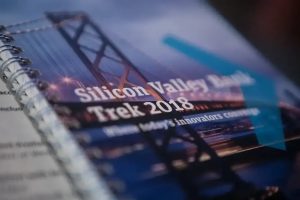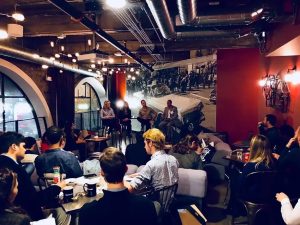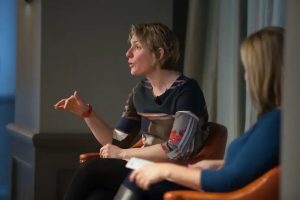Silicon Valley: An Entrepreneur’s True North Star

I am part of the IIMavericks program run by CIIE for IIM Ahmedabad students who are interested in entrepreneurship and want to explore it as a viable career option. As a part of the program, I am currently working on Blockchain based global sharing platform. I was extremely fortunate to get selected for Silicon Valley Trek 2018, organized by Silicon Valley Bank in the bay area, San Francisco. I was part of a cohort of 28 student innovators chosen from top universities across the globe.

I am writing this blog to share my experience and learnings. I won’t be able to do justice to the actual experience as it can’t be captured in words but I hope that my limited understanding will be helpful to anyone who aspires to be an entrepreneur in any context or capacity. I have tried my best to share key insights and I believe it will be valuable. Here it goes:
You’ve probably heard this N number of times but rarely do we realize or acknowledge how our network plays a crucial role in shaping our lives. I have been able to gain access to a lot of opportunities which were available only in closed groups and sometimes, its been really helpful in hiring employees through references or picking brains of an industry expert. Ashraf Hebela, Head of Analytics and Sales Operations, Silicon Valley Bank highlighted through Neural Map of Silicon Valley, how connections lead to success in tech industry and how that in turn breeds more success. Think of your network as an extended part of yourself and you can tap into it from time to time to gain access to more opportunities, collective intelligence, resources, human capital. Of course, you’d need to nurture it like you would take care of your own body or mind.

“Innovation Economy”, “Value Add” and “Solving Critical Problems” are not just fancy buzzwords to be used casually in conversations or presentations but people actually believe in it and bet their lives on it. I might be wrong in my perception but everyone I met in Bay Area was actually trying to build something category defining or disrupting an industry which definitely requires high levels of talent and skillset but more importantly than that will and desire to actually do something meaningful rather than just trying to book profits, not that booking profits is wrong but doing it meaningfully with a long perspective is always healthy and satisfying. These experiences are helping shape my mindset towards picking up problems which if solved would have huge impact.

Google is synonymous with internet itself worldwide and we interacted with Obi Felten, Head of getting moonshots ready for contact with real world. X, Alphabet’s moonshot factory as the name suggests stands for projects which no rational, practical human or organization will attempt. Just knowing that there is someone out there crazy enough to even try to work on such projects gives immense sense of possibility and courage to work on one’s own insane ideas. Of course, you might say that Google has huge laden coffers and its easy for them but then ask yourself how many organizations out there systematically handle moonshot projects and failure on a daily basis. Also, if there is one place it’s Silicon Valley where you’ll find more optimists than pessimists, both have important roles to play but mostly the optimists take moonshots.

I don’t know if there is any similarity between pirates and entrepreneurs but both look up to their “North Star” for direction in completely dark and unchartered waters. I heard it repeatedly from entrepreneurs of startups at different growth stages that more often than not when they start to lose focus when organisation grows beyond the initial two pizza team it helps to think about your vision and then align everything backwards from there. Startups which are still small may even be struggling with a product market fit, the vision helps to reinforce belief and faith in what you’re doing and keeping at it.
“Failure is not an option” is so deeply ingrained in our society, culture and mindset that experimentation takes a back seat. We tend to so firmly believe in the idea of success that our appetite for risk is minimal and we completely miss out the fact that neither success nor failure is permanent. Alternative to entrepreneurship is employment and employment is nothing but a safety cushion created by an entrepreneur for his/her extremely valuable team. The end result of not taking risks is mediocrity in perpetuity. In fact, we should be failing as fast as possible to learn as much as possible in as little time as possible. If we as a society become more accepting of failures then we would have more number of people following their passions and of course it goes without saying that inherent assumption being you tried your best and then failed. Failure should be a badge of honor like battle scars.

Raymond Nasr, Lecturer, Stanford Business School, shared what makes valley special and hot bed for innovation. Loyalty towards companies and each other combined with appreciation of leadership leads to higher engagement and commitment towards the vision. Portability of talent between different fields leads to perspectives and ideas which would have been unimaginable otherwise. Managing narratives is definitely important but nothing makes for better narrative than facts. If you walk into a company and people are having a ball, little crazy and creative then you know that this company is doing some things right and its full of people driven by purpose and desire to change the world. Silicon Valley has the supportive ecosystem and like-minded people to create the perfect breeding ground for innovation. I know now the kind of culture I would like to see in my company.
Nowadays when I get new ideas I use first principles to test it, which essentially means questioning every single underlying assumption and forming my hypothesis and first validating the assumptions which weaken the hypothesis the most. I have found this approach to be very helpful as it helps minimise risk of putting in too much effort into a particular direction without knowing how much fruit it will bear.

(Authored by Anchal Taatya)
